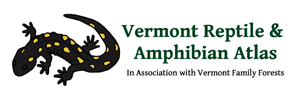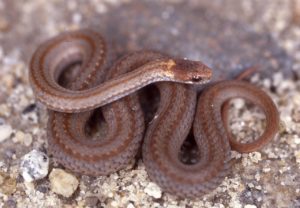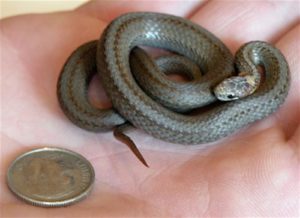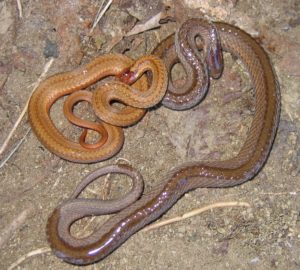Storeria occipitomaculata
Identification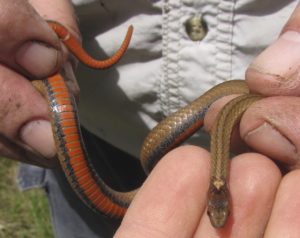
Red-bellied Snakes in Vermont are most often brown, but they are sometimes black, or gray. They usually have two thin dark stripes along either side of their backs. The three off-white spots on their necks are small but very helpful for identification. They have one on the back of the neck and one on each side of the neck and they vary from bright white to tan. Sometimes the spots can be joined into a ring, especially when the snakes are young. The underside is almost always bright red in color and often outlined in black. They are Vermont’s smallest snake and only grow up to about 1 foot in length (the longest documented in Vermont is 13 inches). Red-bellied Snakes have keeled scales and give live birth. The newborn young are so small that they are often mistaken for worms.
Get more detailed identification and life history information by downloading the chart here.
You can learn more about this species and see some video footage by checking out this clip from our Rattlers, Peepers & Snappers DVD.
Range/Habitat
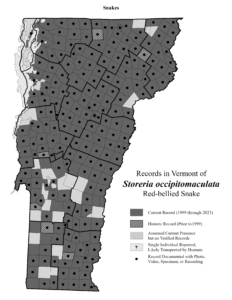
[ click image to zoom | download printable PDF ]

[ click image to zoom | download printable PDF ]
Red-bellied Snakes inhabit woodlands with small openings and lots of cover. They are widespread in woodlands at mid- to high elevations.
Status
This species has a state natural heritage rank of S5 (common). Red-bellied Snakes are quite common, but very secretive. Please report sightings of this species in Vermont if you have not reported them within the last five years from a given location. Any natural history observations (feeding, migrations, road crossing areas, early or late season appearance, abnormalities, etc.) are appreciated. Photographs are always helpful, particularly if your report is the first report of this species from a town.
Additional Photos
More Info
- Storeria occipitomaculata at the Animal Diversity website
- Storeria occipitomaculata at the Canadian Herpetological Society website
- Storeria occipitomaculata at the Snakes of Massachusetts website
Species summary written by Ariel K. McK. Burgess.
